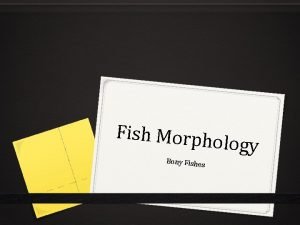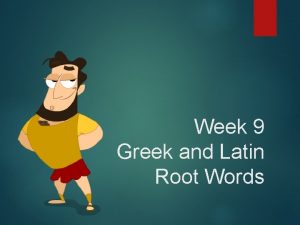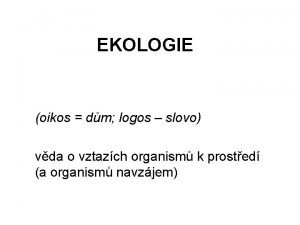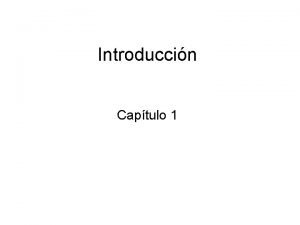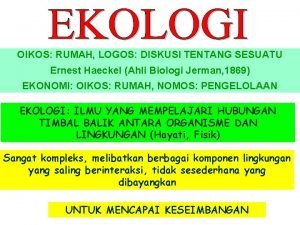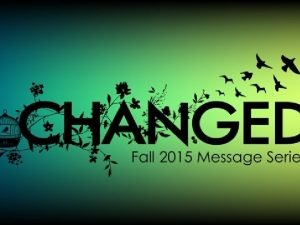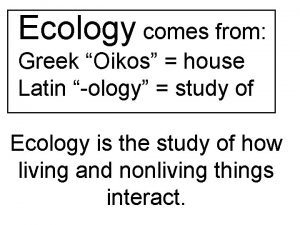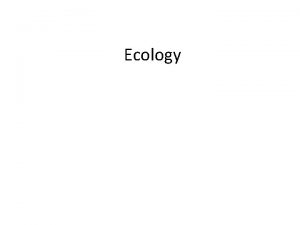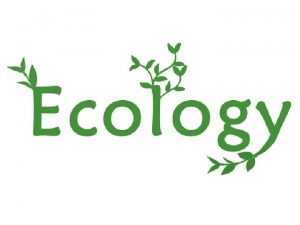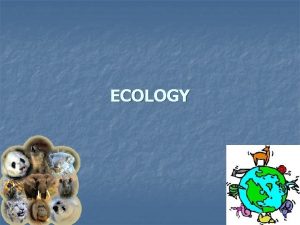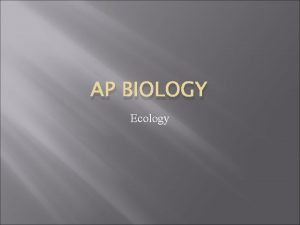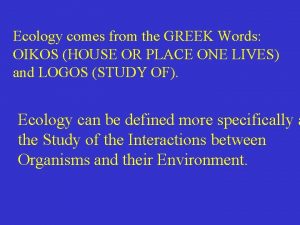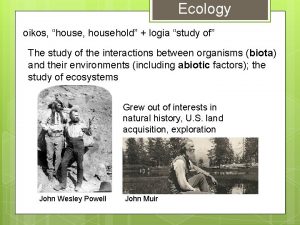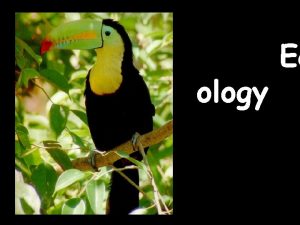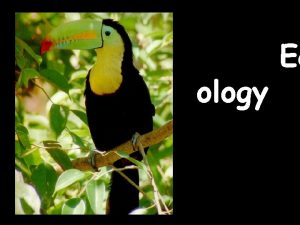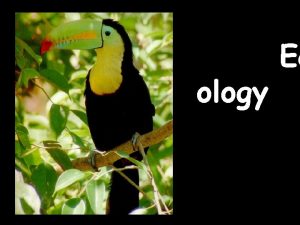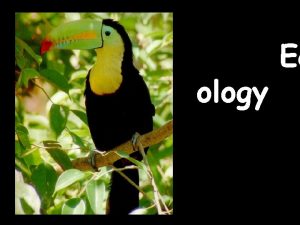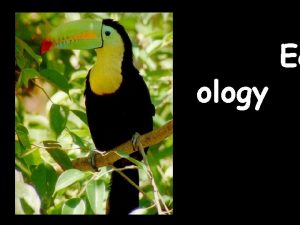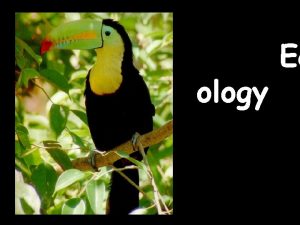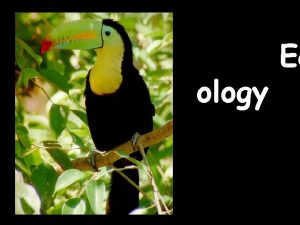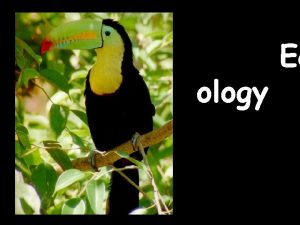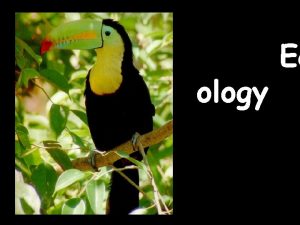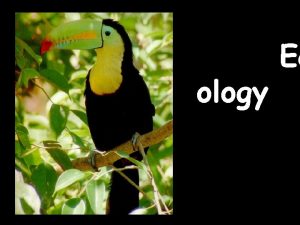Ecology Gr oikos means house Gr ology means





















- Slides: 21


Ecology Gr. “oikos” means house Gr. “ology” means the study of

What is Ecology? • The study of the “house” of nature • The study of relationships between organisms, populations, communities and the environment

Ecosystem Structure • Biotic Factors (“bio” living) – Parts of an ecosystem that are alive or once were alive (i. e. organisms and their products) • Examples: bacteria, archaea, protists, fungi, plants, animals, feces, oil, fossils, coal • Abiotic Factors (“a” not, “bio” living) – Parts of an ecosystem that were never alive • Examples: rocks, soil, water, light, air, temp

Find the Biotic & Abiotic Factors

Levels of Organization • • • Individual Population Community Ecosystem Biome Biosphere



What is an Individual? • An individual is a single organism

What is a Population? • A population is all the members of one species in an area at one time

What is a Community? • A community is all of the organisms in a particular area at one time.

What is an Ecosystem? • An ecosystem includes all of the biotic factors and all of the abiotic factors in a specific area

What is a Biome? • A biome is a large region characterized by a specific climate and certain kinds of plants and animals, e. g. savanna, desert, rainforest

Map of Earth’s Major Biomes

Interspecies Interactions • Interactions between the different species in a community – Competition (-) negative/negative relationship – Predation (+) (-) positive/negative relationship • Traditional Predation • Herbivory • Parasitism – Mutualism (+) positive/positive relationship – Commensalism (+) (0) positive/no effect relationship

Competition • Often species must compete for resources.

Predation • The act of one organism killing another food

Parasitism • One organism benefits and the other is harmed, but usually not killed. One organism feeds on another organism, who is called the host.

Symbiosis (“sym” together “bio” life “sis” the state of) • A relationship in which two species live in close association with each other

Mutualism • A symbiotic relationship in which both species benefit

Commensalism • A symbiotic relationship in which one species benefits and the other is neither harmed nor helped.
 Oikos
Oikos Body shapes of bony fish
Body shapes of bony fish My ology
My ology Ology root word
Ology root word Ekologi berasal dari kata oikos dan logos logos berarti
Ekologi berasal dari kata oikos dan logos logos berarti Stenoekni druhy
Stenoekni druhy Oikos y logos
Oikos y logos Flow of energy vs flow of matter
Flow of energy vs flow of matter International institute of christian discipleship
International institute of christian discipleship Oikos meaning
Oikos meaning Oikos nomos
Oikos nomos Nivel poblacion
Nivel poblacion Oikos dan logos
Oikos dan logos They went house to house
They went house to house Functions of dfhi
Functions of dfhi Gad4d
Gad4d Banished boarding house
Banished boarding house Snug house bug house
Snug house bug house My house shall be called a house of prayer
My house shall be called a house of prayer Meta means in metamorphism
Meta means in metamorphism Levels of biodiversity
Levels of biodiversity Poly means many and gon means
Poly means many and gon means

